First Impressions
Sony believes its Hollywood credentials will help its new TV range dominate the 2024 telly-box office
-
Screen sizesAvailable in 75- and 85-inch screens -
Mini LEDRevised XR Backlight Master Drive to improve black levels and brightness
Introduction
Sony is overhauling its TV and home entertainment range for 2024, announcing a seismic shake-up in technology and terminology. Out goes its old numerical nomenclature and in comes a simpler, more understandable line-up of screens and partnering soundbars.
Under the umbrella slogan of ‘Cinema is coming home’, the brand has announced a trio of BRAVIA branded screens and soundbars – and they’re looking like the best yet from the Japanese major.
I flew out to Sony Pictures Entertainment, in Culver City, Los Angeles, to get an early hands on, and to better understand the philosophy driving the change.
Sony says it wants to ‘renew’ its familiar BRAVIA TV branding, and I’m tempted to say ‘what took you so long?’ The move makes perfect sense, and plays brilliantly into its ‘creators intent’ playbook, as well as its desire to push the HDR envelope.
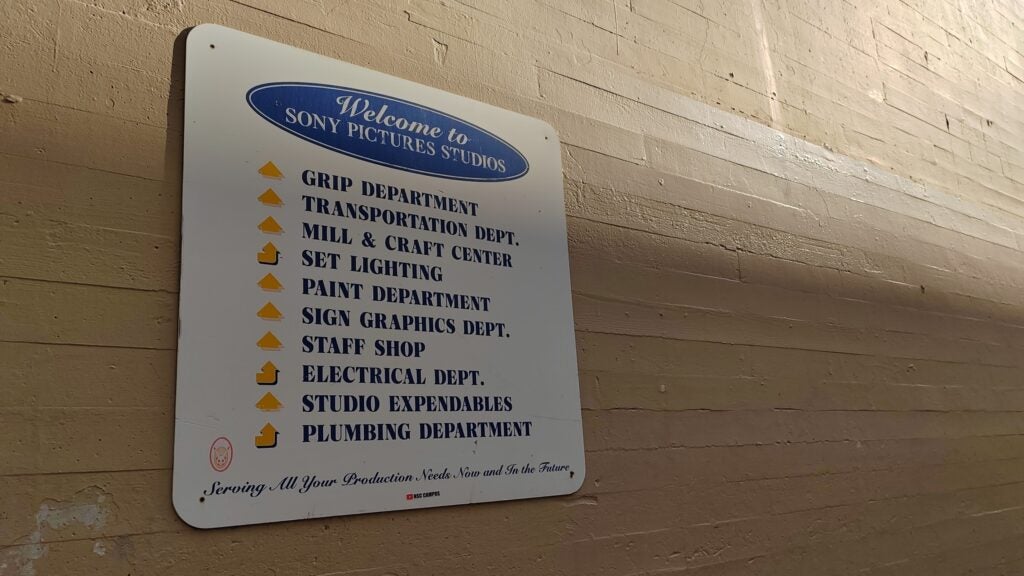
Overview
- BRAVIA 7, 8, 9 models
- Emphasis on bright HDR content
- New soundbar range
Speaking at the launch event, Joseph Kosinski, Director of Top Gun: Maverick, stressed the importance of high brightness HDR in the home. “We’ll spend weeks, if not months, colour grading a movie,” he said, “it is critical the consumer has an option to see it exactly as we intended…”
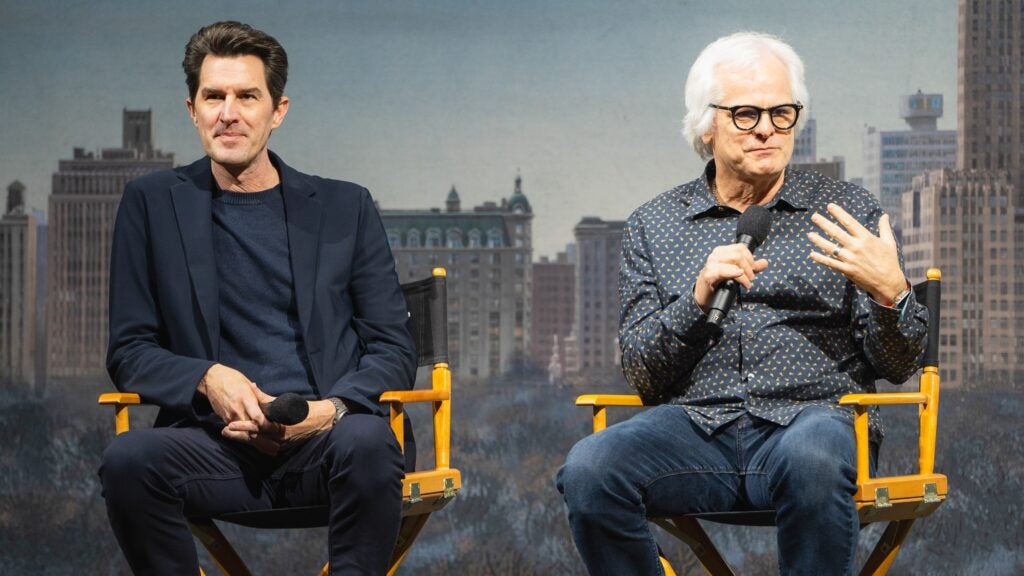
Time and again during my visit, with in-depth briefings across the Sony Pictures studio lot, I was reminded that Sony Home Entertainment is inextricably linked with the film and TV production chain.
From magnificent audio mastering studios and ADR studios, to its fascinating foley sound creation and virtual production facilities, the message was the same: there is literally no other home entertainment brand more entrenched in the movie making process.
So here’s the skinny: 2024 will see three BRAVIA branded screens launched, led by the flagship BRAVIA 9. This, perhaps surprisingly, is a Mini LED model, and not an OLED. It packs the brand’s latest backlight and panel driver technology, delivering both exceptional HDR peak brightness, but also inky dark black level performance.
It’s joined in the line-up by the BRAVIA 8, Sony’s only new OLED for 2024, and the BRAVIA 7, a more affordable Mini LED model. I had the opportunity to scrutinise all three, and was rocked by just how good they looked.
The BRAVIA 9 will be available in 75- and 85-inch screen sizes; the BRAVIA 8 is available in 55-, 65- and 77-inch screen sizes, and the BRAVIA 7 ships in 55-, 65-, 75- and 85-inch screen sizes. Prices are TBA.
Accompanying this trio are matching BRAVIA Theatre soundbars – the BRAVIA Theatre Bar 8 and 9, and a new BRAVIA Theatre Quad system, which is actually an update on its HT-A9 Dolby Atmos system.
Picture Quality
- New backlighting technology
- Mini LED and OLED screens
So how exactly do the new BRAVIA TVs shape up?
The BRAVIA 9 is predictably formidable. Its XR Backlight Master Drive has a unique new panel driver design and local dimming algorithm to precisely control thousands of LEDs.
To demonstrate just how precise this new backlighting tech is, it presented a screen sans LCD so that we could see the naked LEDs painting an image on their lonesome. It was easy to see what was being depicted.
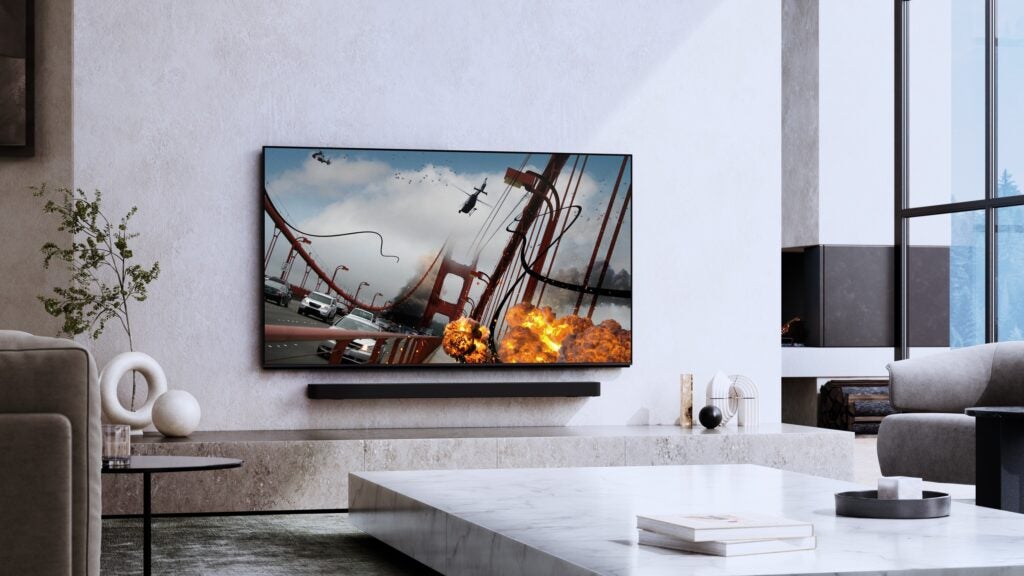
Viewed in Vivid mode, to really show the BRAVIA 9 at full stretch, the set offers OLED-quality black levels, as well as incredible brightness. There’s an enormous sense of depth to its images, with extremely vibrant colour reproduction, and subtle extensions of green and blue.
The BRAVIA 9 really begins to put space between itself and competitors at higher brightness levels. Using a Sony Professional BVM-HX3110 Mastering Monitor as reference, and content mastered at 4000 nits, it positively shines.
The BRAVIA 9 isn’t as bright as the mastering monitor, but it was noticeably brighter than the competitor models dragged in for A/B comparison.
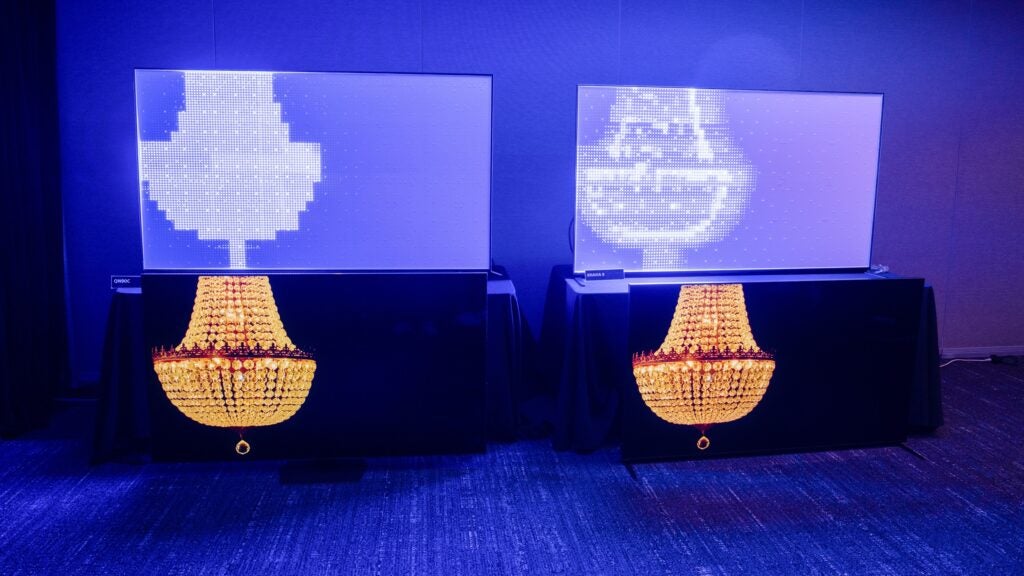
What’s particularly interesting is its colour performance at higher brightness levels. When content is graded at high peak brightness, it’s not just about the luminosity on display but also the colour nuance retained in the picture.
I ran through sequences from Alpha, the 2018 prehistoric adventure about a hunter and his pet wolf, which has been graded at 4000 nits. The piece has no shortage of spectacular landscapes and sunlit skyscapes, and the BRAVIA 9 was finding shades just not reproduced on its rivals.
The BRAVIA 9’s ability to reach peak HDR luminance is remarkable, especially when you consider how well it also retains near black shadow detail.
Sony says it’s 50 per cent brighter than the X95L, with 3x the number of dimming zones. It’s also 20 per cent more energy efficient. It’s a stunning advertisement for HDR content.
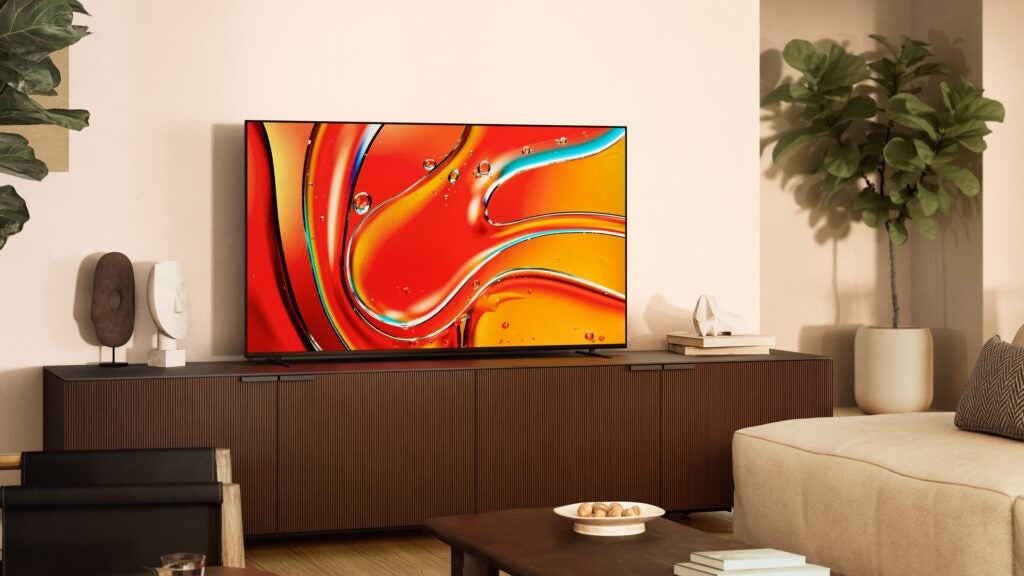
The BRAVIA 7 is the second Mini LED in the new range. Essentially a mid-range replacement for the X90L, moving to Mini LED away from Full Array LED brings with it 8x more dimming zones and 33 per cent more brightness.
Watching in Standard mode, I noted excellent colour and naturalistic detail. The picture is bright and contrasty. Viewing in Professional mode, and a sequence from Black Widow, it’s clear the BRAVIA 7 is a little less tolerant than the BRAVIA 9 when it comes to viewing angles, but there’s surprisingly little blooming.
And then there’s the BRAVIA 8 OLED, Sony’s only new OLED for 2024. This steps into the space currently occupied by the A80L, but comes with improvements to the XR processor, specifically improved Scene Selection technology, and better face detection.
The BRAVIA 8 also boasts an all new design. There’s no traditional OLED bump on the back, more a smooth back panel so it sits a little bit more flush to the wall.
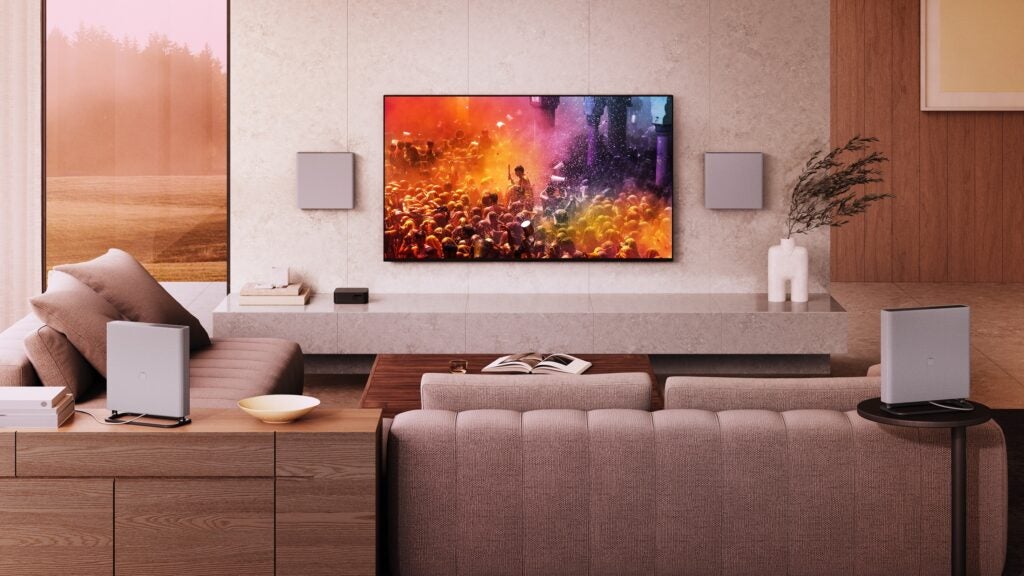
Picture quality is directly comparable to the A80L, which is no bad thing. There’s a slight lift in peak brightness (Sony engineers suggest it’s around 10 per cent), but image characteristics are much the same. The sense of depth the BRAVIA 8 delivers is often extraordinary, with solid colours and strong shadow detail.
Running the BRAVIA 8 in Professional mode, Harry Potter and the Deathly Hallows: Part 2, is used to challenge its ability to render difficult dark scenes, and the screen acquits itself well, although during my audition Sony admits it’s still fine tuning this particular preset.
New on all three BRAVIA TVs are specific Studio calibrated image presets, for Sony Pictures Core, Netflix, and for the first time, Prime Video.
Naturally Dolby Vision and Dolby Atmos support, as well as IMAX Enhanced certification, comes as standard.
Sound Quality
Audio also impresses across the board. As the BRAVIA 9 is an LCD screen, Sony has turned to its frame-based Acoustic Multi-Audio+ system for sonic immersion. To create a sense of height and width, it comes with a pair of Beam Tweeters at the top of the panel, supported by Frame Tweeters on each side.
This upgraded driver package improves dialogue integrity and audio positioning.
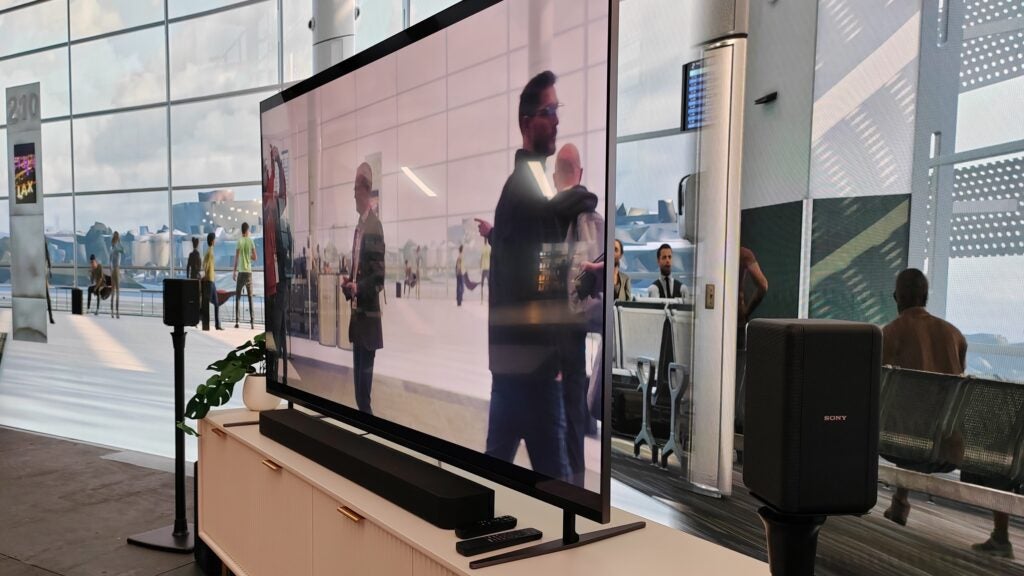
The 7 lacks the Frame and Beam Tweeters found on the flagship, and performs in stereo. The BRAVIA 8 OLED, meanwhile, features the Acoustic Surface Audio + system, in a 2.1 configuration, familiar from previous Sony OLEDs.
The BRAVIA 9 promises to be the punchiest sound of the group, with 70W of audio in a 2.2.2 configuration. 10W goes to each of the two mid-range drivers, with 2 x 6W going to the Frame Tweeters, 2 x 10W going to the Beam tweeters and 20W divided between the dual subwoofers.
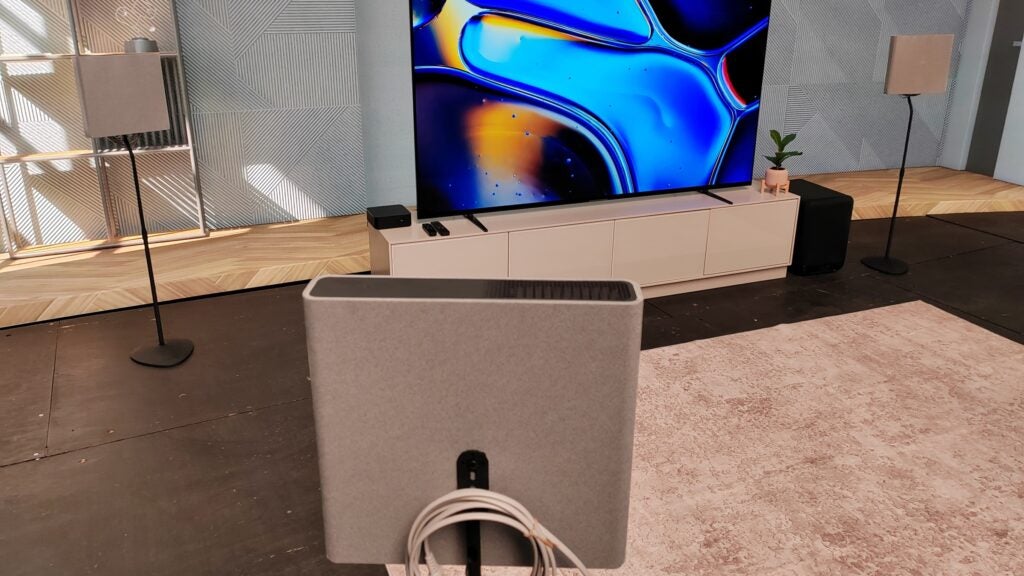
First Impressions
While Sony isn’t yet talking prices, I do know the BRAVIA 8 65-inch OLED will be around the same ballpark as the 77-inch BRAVIA 7, which is quite the conundrum for would be buyers. As a rule of thumb, if you watch primarily in a dark room, then OLED would seem the natural choice, however if you like bright room viewing, the Mini LED newbie might be the better buy.
Of course, if you’re not prepared to compromise, then the BRAVIA 9 is the undisputed Top Gun.
First Impressions
Sony believes its Hollywood credentials will help its new TV range dominate the 2024 telly-box office
-
Screen sizesAvailable in 75- and 85-inch screens -
Mini LEDRevised XR Backlight Master Drive to improve black levels and brightness
Introduction
Sony is overhauling its TV and home entertainment range for 2024, announcing a seismic shake-up in technology and terminology. Out goes its old numerical nomenclature and in comes a simpler, more understandable line-up of screens and partnering soundbars.
Under the umbrella slogan of ‘Cinema is coming home’, the brand has announced a trio of BRAVIA branded screens and soundbars – and they’re looking like the best yet from the Japanese major.
I flew out to Sony Pictures Entertainment, in Culver City, Los Angeles, to get an early hands on, and to better understand the philosophy driving the change.
Sony says it wants to ‘renew’ its familiar BRAVIA TV branding, and I’m tempted to say ‘what took you so long?’ The move makes perfect sense, and plays brilliantly into its ‘creators intent’ playbook, as well as its desire to push the HDR envelope.

Overview
- BRAVIA 7, 8, 9 models
- Emphasis on bright HDR content
- New soundbar range
Speaking at the launch event, Joseph Kosinski, Director of Top Gun: Maverick, stressed the importance of high brightness HDR in the home. “We’ll spend weeks, if not months, colour grading a movie,” he said, “it is critical the consumer has an option to see it exactly as we intended…”

Time and again during my visit, with in-depth briefings across the Sony Pictures studio lot, I was reminded that Sony Home Entertainment is inextricably linked with the film and TV production chain.
From magnificent audio mastering studios and ADR studios, to its fascinating foley sound creation and virtual production facilities, the message was the same: there is literally no other home entertainment brand more entrenched in the movie making process.
So here’s the skinny: 2024 will see three BRAVIA branded screens launched, led by the flagship BRAVIA 9. This, perhaps surprisingly, is a Mini LED model, and not an OLED. It packs the brand’s latest backlight and panel driver technology, delivering both exceptional HDR peak brightness, but also inky dark black level performance.
It’s joined in the line-up by the BRAVIA 8, Sony’s only new OLED for 2024, and the BRAVIA 7, a more affordable Mini LED model. I had the opportunity to scrutinise all three, and was rocked by just how good they looked.
The BRAVIA 9 will be available in 75- and 85-inch screen sizes; the BRAVIA 8 is available in 55-, 65- and 77-inch screen sizes, and the BRAVIA 7 ships in 55-, 65-, 75- and 85-inch screen sizes. Prices are TBA.
Accompanying this trio are matching BRAVIA Theatre soundbars – the BRAVIA Theatre Bar 8 and 9, and a new BRAVIA Theatre Quad system, which is actually an update on its HT-A9 Dolby Atmos system.
Picture Quality
- New backlighting technology
- Mini LED and OLED screens
So how exactly do the new BRAVIA TVs shape up?
The BRAVIA 9 is predictably formidable. Its XR Backlight Master Drive has a unique new panel driver design and local dimming algorithm to precisely control thousands of LEDs.
To demonstrate just how precise this new backlighting tech is, it presented a screen sans LCD so that we could see the naked LEDs painting an image on their lonesome. It was easy to see what was being depicted.

Viewed in Vivid mode, to really show the BRAVIA 9 at full stretch, the set offers OLED-quality black levels, as well as incredible brightness. There’s an enormous sense of depth to its images, with extremely vibrant colour reproduction, and subtle extensions of green and blue.
The BRAVIA 9 really begins to put space between itself and competitors at higher brightness levels. Using a Sony Professional BVM-HX3110 Mastering Monitor as reference, and content mastered at 4000 nits, it positively shines.
The BRAVIA 9 isn’t as bright as the mastering monitor, but it was noticeably brighter than the competitor models dragged in for A/B comparison.

What’s particularly interesting is its colour performance at higher brightness levels. When content is graded at high peak brightness, it’s not just about the luminosity on display but also the colour nuance retained in the picture.
I ran through sequences from Alpha, the 2018 prehistoric adventure about a hunter and his pet wolf, which has been graded at 4000 nits. The piece has no shortage of spectacular landscapes and sunlit skyscapes, and the BRAVIA 9 was finding shades just not reproduced on its rivals.
The BRAVIA 9’s ability to reach peak HDR luminance is remarkable, especially when you consider how well it also retains near black shadow detail.
Sony says it’s 50 per cent brighter than the X95L, with 3x the number of dimming zones. It’s also 20 per cent more energy efficient. It’s a stunning advertisement for HDR content.

The BRAVIA 7 is the second Mini LED in the new range. Essentially a mid-range replacement for the X90L, moving to Mini LED away from Full Array LED brings with it 8x more dimming zones and 33 per cent more brightness.
Watching in Standard mode, I noted excellent colour and naturalistic detail. The picture is bright and contrasty. Viewing in Professional mode, and a sequence from Black Widow, it’s clear the BRAVIA 7 is a little less tolerant than the BRAVIA 9 when it comes to viewing angles, but there’s surprisingly little blooming.
And then there’s the BRAVIA 8 OLED, Sony’s only new OLED for 2024. This steps into the space currently occupied by the A80L, but comes with improvements to the XR processor, specifically improved Scene Selection technology, and better face detection.
The BRAVIA 8 also boasts an all new design. There’s no traditional OLED bump on the back, more a smooth back panel so it sits a little bit more flush to the wall.

Picture quality is directly comparable to the A80L, which is no bad thing. There’s a slight lift in peak brightness (Sony engineers suggest it’s around 10 per cent), but image characteristics are much the same. The sense of depth the BRAVIA 8 delivers is often extraordinary, with solid colours and strong shadow detail.
Running the BRAVIA 8 in Professional mode, Harry Potter and the Deathly Hallows: Part 2, is used to challenge its ability to render difficult dark scenes, and the screen acquits itself well, although during my audition Sony admits it’s still fine tuning this particular preset.
New on all three BRAVIA TVs are specific Studio calibrated image presets, for Sony Pictures Core, Netflix, and for the first time, Prime Video.
Naturally Dolby Vision and Dolby Atmos support, as well as IMAX Enhanced certification, comes as standard.
Sound Quality
Audio also impresses across the board. As the BRAVIA 9 is an LCD screen, Sony has turned to its frame-based Acoustic Multi-Audio+ system for sonic immersion. To create a sense of height and width, it comes with a pair of Beam Tweeters at the top of the panel, supported by Frame Tweeters on each side.
This upgraded driver package improves dialogue integrity and audio positioning.

The 7 lacks the Frame and Beam Tweeters found on the flagship, and performs in stereo. The BRAVIA 8 OLED, meanwhile, features the Acoustic Surface Audio + system, in a 2.1 configuration, familiar from previous Sony OLEDs.
The BRAVIA 9 promises to be the punchiest sound of the group, with 70W of audio in a 2.2.2 configuration. 10W goes to each of the two mid-range drivers, with 2 x 6W going to the Frame Tweeters, 2 x 10W going to the Beam tweeters and 20W divided between the dual subwoofers.

First Impressions
While Sony isn’t yet talking prices, I do know the BRAVIA 8 65-inch OLED will be around the same ballpark as the 77-inch BRAVIA 7, which is quite the conundrum for would be buyers. As a rule of thumb, if you watch primarily in a dark room, then OLED would seem the natural choice, however if you like bright room viewing, the Mini LED newbie might be the better buy.
Of course, if you’re not prepared to compromise, then the BRAVIA 9 is the undisputed Top Gun.
























